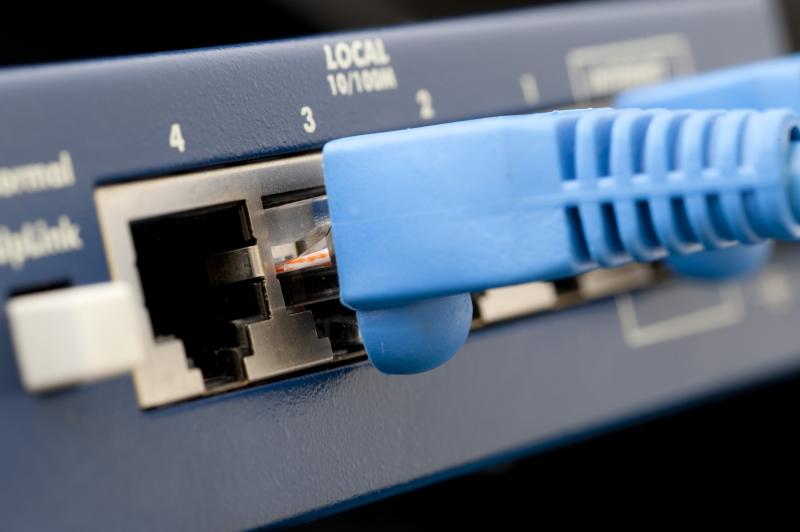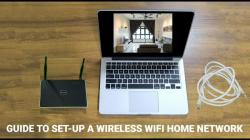What to choose between cable or DSL Internet?
Choosing between cable and DSL (Digital Subscriber Line) internet depends on various factors, including your specific needs, location, and available options. Both cable and DSL are types of broadband internet services, but they have differences in terms of speed, reliability, and availability. Here are some considerations and comparisons to help you make an informed decision:
**1. Speed:
- Cable: Cable internet generally offers higher speeds compared to DSL. Cable speeds can range from 20 Mbps to over 1 Gbps, depending on the service provider and your location.
- DSL: DSL speeds are typically lower than cable but can still provide decent performance. DSL speeds commonly range from 1 Mbps to 100 Mbps.
**2. Reliability:
- Cable: Cable internet reliability can be affected by the number of users in your neighborhood sharing the same cable line. During peak usage times, you may experience slower speeds.
- DSL: DSL is often considered more reliable because it provides a dedicated line to your residence. The reliability may vary depending on your distance from the central office.
**3. Availability:
- Cable: Cable internet is widely available in urban and suburban areas. However, in rural or remote locations, availability may be limited.
- DSL: DSL is more widely available in various areas, including rural regions. It relies on existing telephone infrastructure, making it accessible in places where cable is not an option.
**4. Cost:
- Cable: Cable internet plans may be more expensive than DSL, especially for higher-speed options. However, pricing can vary among providers.
- DSL: DSL is often more budget-friendly, making it a cost-effective choice for users with moderate internet needs.
**5. Installation Process:
- Cable: Cable internet typically requires professional installation by a technician. The installation process may involve setting up a cable modem and connecting it to the cable infrastructure.
- DSL: DSL installation is often simpler and can be done by the user. It usually involves plugging in a DSL modem to an existing telephone jack.
**6. Equipment:
- Cable: Cable internet requires a cable modem, which is usually provided by the service provider. Some providers may charge a monthly fee for modem rental.
- DSL: DSL requires a DSL modem, which can be purchased or rented from the service provider. Some providers offer modems as part of the service package.
**7. Customer Support:
- Cable: Customer support experiences can vary among cable providers. Research customer reviews and satisfaction ratings to get an idea of the level of support you can expect.
- DSL: DSL providers also have varying customer support quality. Check reviews and ratings to gauge the customer service performance of DSL providers in your area.
**8. Future Expansion:
- Cable: Cable infrastructure is capable of supporting higher speeds, making it easier for providers to upgrade their networks in the future.
- DSL: The speed capabilities of DSL are more limited compared to cable. Upgrades may be more challenging and may depend on the type of DSL technology used in your area.
**9. Bundle Options:
- Cable: Cable providers often offer bundle options that include internet, television, and phone services. This can be convenient for users who want multiple services from a single provider.
- DSL: DSL providers may also offer bundle options, although the range of services and bundling options can vary.
**10. Local Factors:- Cable: Check the availability and quality of cable service in your specific location. Local infrastructure and the provider's network in your area can impact the service quality.- DSL: The quality of DSL service is influenced by the distance from the central office. Closer proximity typically results in better performance.
Conclusion:Consider your specific internet needs, budget, and the availability of services in your area when choosing between cable and DSL. If high-speed options and reliability are critical, cable may be a better choice. If you are in a rural area, have moderate internet needs, and are looking for cost-effective options, DSL might be suitable. Additionally, research customer reviews, consider bundle options, and compare the plans offered by different providers to make an informed decision.
Choosing the Right Internet Lane: Cable vs. DSL
Making the call between cable and DSL internet isn't just about picking a plan. It's about finding the perfect fit for your needs and budget. Let's dive into the factors you should consider:
1. Factors to Consider:
- Speed: Cable generally offers faster download and upload speeds, making it ideal for streaming, gaming, and downloading large files. DSL speeds are slower but often good enough for basic browsing, email, and video calls.
- Availability: Cable is widely available in urban and suburban areas, butDSL has wider coverage in rural areas. Check availability in your specific location before you decide.
- Pricing: Cable plans can be slightly more expensive than DSL, but this can vary depending on the speed and features offered.
- Data Caps: Some cable providers have data caps, which limit your total internet usage and add extra charges if you exceed them. DSL typically doesn't have data caps.
- Bundled Services: Cable providers often offer bundles with TV and phone service, which can be a good deal if you need all these services.
2. Comparing Options:
| Feature | Cable | DSL |
|---|---|---|
| Download Speed | Up to 1,000 Mbps | Up to 100 Mbps |
| Upload Speed | Up to 50 Mbps | Up to 20 Mbps |
| Availability | Urban & Suburban | Rural & Urban |
| Price | Usually slightly higher | More affordable |
| Data Caps | Possible | Usually no |
| Bundled Services | Common | Less common |
3. Use Cases and Preferences:
- Cable is ideal for: Heavy internet users, streamers, gamers, households with multiple devices.
- DSL is a good choice for: Budget-conscious users, light internet users, rural areas.
4. Technological Differences:
- Cable: Uses coaxial cables similar to those for TV, sharing bandwidth with other users. Performance can be affected by peak usage during certain times.
- DSL: Uses telephone lines, dedicated connection less impacted by peak usage.
5. When to Choose Cable:
- You need the fastest speeds for streaming, gaming, or large downloads.
- You have multiple devices using the internet simultaneously.
- You want bundled services with TV and phone.
6. When to Choose DSL:
- You prioritize affordability and don't need high speeds.
- You live in a rural area with limited cable availability.
- You don't use data-intensive applications and appreciate consistent performance.
Remember, the best choice depends on your individual needs and priorities. Research available plans, compare prices, and consider your internet usage habits before making a decision. You can also talk to providers and neighbors to get recommendations for your specific location.
No matter which option you choose, make sure you understand the terms of your service agreement, including data caps, hidden fees, and cancellation policies. Happy browsing!













